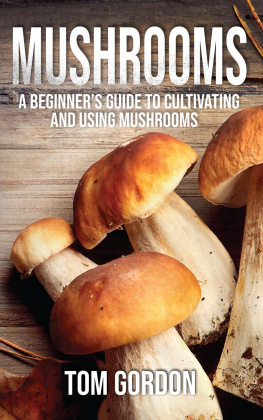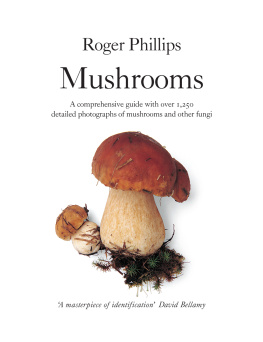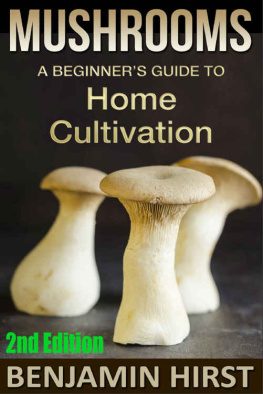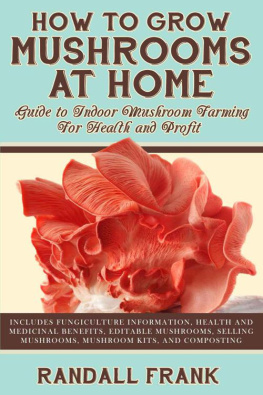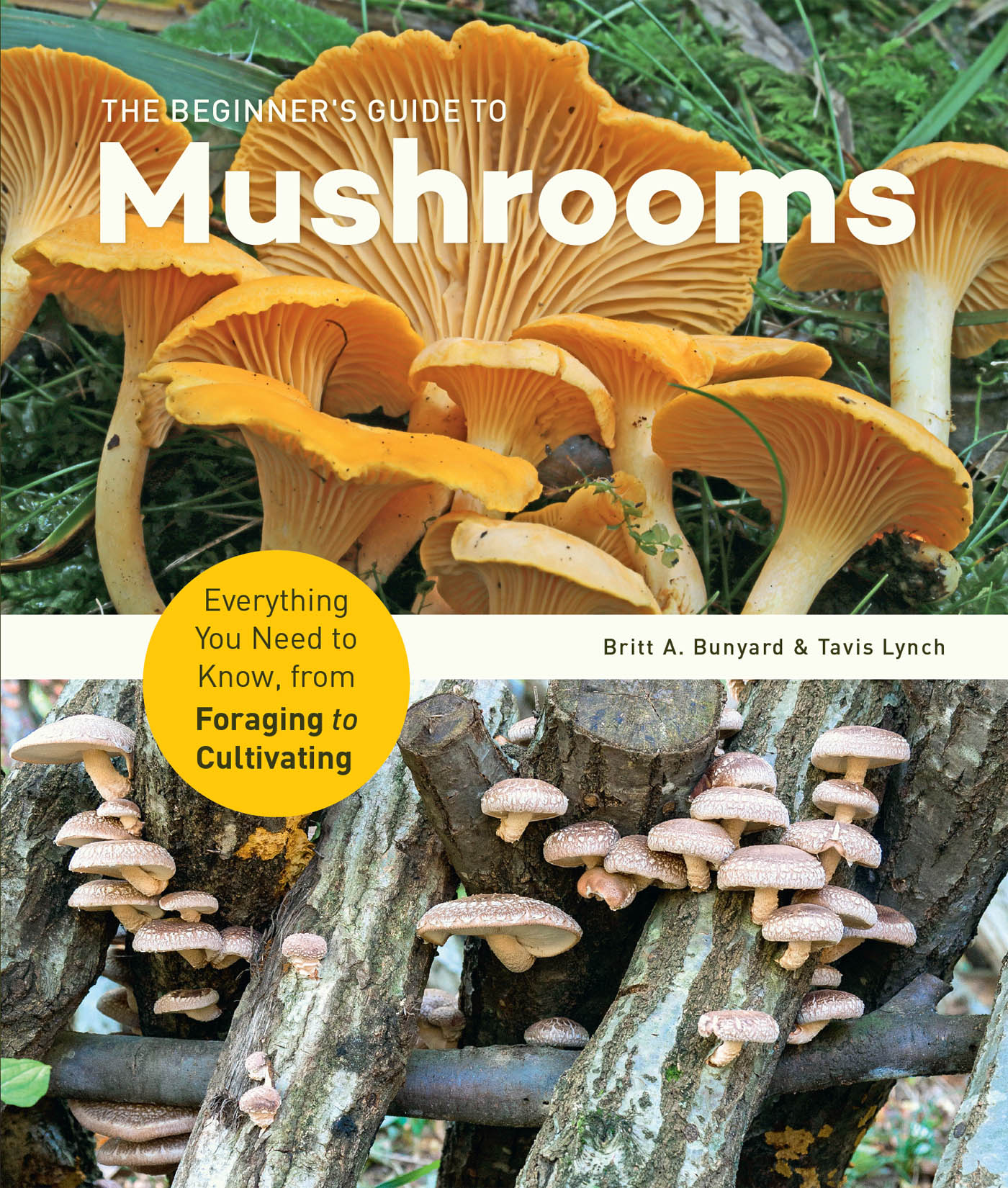Britt A. Bunyard & Tavis Lynch
READ THIS BOOK BEFORE YOU PICK YOUR NEXT MUSHROOM. This book is where your mushrooming journey begins, because this book is information. And with a little easy-to-follow information, the world of wild mushrooming will open up to you. This book will help you to identify the next mushroom you see in the field or forest, tell you a little bit about what that mushroom is doing there and its role in the natural world around you, and maybe even tell you some enjoyable things to do with it; for example, photography, natural fiber dyeing, cultivation at home, or putting it in a starring role in your next gourmet meal. The information in this book can also keep you safe, as many wild mushrooms are poisonous if eatensome of them deadly. It is unwise and potentially dangerous to eat any mushroom (or plant or mystery meat at the highway truck stop, for that matter) without knowing exactly what it is that you are putting into your body.
ABOUT THIS BOOK
This book is a pictorial guide to the most commonly encountered mushrooms of North America and Europe. References to West means west of the Rocky Mountains, and East is east of the Rocky Mountains. In some cases, the geographic range will be noted as restricted to the Southeast, Northeast, Midwest, or the like in North America. For Europe, general geographic restrictions, if any, will be noted as Mediterranean, northern Europe, and so on. Besides geographic location and time of year, this book bases identification of mushrooms on macro-characteristics of mushrooms (those that can be seen with the unaided eye) as well as, at times, tastes and smells. It is absolutely safe to handle any mushroomeven deadly poisonous species. It is absolutely safe to taste a very small piece of any mushroomeven deadly poisonous speciesas long as no part is swallowed or ingested. Poisonous mushrooms are dangerous only if consumed. Also note that mushrooms can at times be highly variable in appearance; size, color, and other features even geographic region or seasonmay fall outside of what is described here or in any book.

Fungal hyphae
Fungi (the singular is fungus) are curious organisms grouped together by virtue of having a unique cell wall and physiology (its chitin-based, as opposed to cellulose-based like plants; or cells without cell walls, as with animals, for example) and a unique form of reproduction and reproductive structures. The body of the fungus is called a mycelium ; it is a network of filamentous cells that are the carrier of nutrients and water to a mushroom; each of these filaments is called a hypha (the plural is hyphae).
There are more than 100,000 named species of fungi on the planet, though mycologists (scientists who pursue the study of fungi) suggest there are more than a million (and likely several times that number) species awaiting discovery. Fungi have a heterotrophic lifestyle, which means, like animals, they cannot create their own energy and basic cellular materials from an energy source in the environment (in contrast to plants, which can harness sunlight energy). Therefore, most fungi make a living by doing one of three things in the environment: decomposing other organic matter that was once living, parasitizing a living host (many animal and probably most plant diseases are caused by fungi), or becoming beneficial partners with other organisms, especially plants. The more we learn about fungi, the more we see that the healthy function of the natural world around us is closely tied to them.
A subset of fungi produces reproductive structures that are large enough to be seen with the unaided eye (macrofungi, as opposed to tiny microfungi). We call those reproductive structures mushrooms. And to make things easier, we often refer to the fungi that make those macro structures as mushrooms too.
There are thousands of species of wild mushrooms in the northern hemisphere. Most have an important role in the environment. They grow in a wide variety of habitats, and most of the mushrooms seen on a walk in the woods are beneficial. Many species are quite specific about their food source and will be found under or near only certain kinds of trees. Some are important as decomposing organisms, aiding in the breakdown of logs, leaves, and other organic debris. This results in the recycling of essential nutrients. Mushrooms can also be parasites of trees or other plants. They can grow into and form their fruiting structures on living trees, thus causing decay of either the sapwood or the heartwood. Many woodland mushrooms, such as mycorrhizal mushrooms, are essential to the good growth and survival of trees because they establish a mutually beneficial relationship with living tree roots. All mushroomswhether poisonous or ediblecan be admired for their beauty and for the fantastic variety of their form, color, and texture.
Sometimes edible and poisonous mushrooms can look very similar, even growing in the same habitat and during the same season. Edible mushrooms are known to be safe to eat because they have been eaten frequently with no ill effects. Poisonous mushrooms are known to be dangerous because someone ate them and became ill or died. There is no test or single characteristic to distinguish edible from poisonous mushrooms. This indicates a need to identify with certainty one of several of the proven edible species; only after identifying a mushroom as edible should it be picked and/or eaten. There are no shortcuts to identifying wild mushrooms. The only way to know the edibility of a mushroom is to identify it with 100% certitude. Learn the edible mushrooms but learn the common poisonous mushrooms too. It is especially important to learn the characteristics of the Amanita genus, because several of its mushrooms are poisonous and common. Amanita mushrooms cause 90% or more of the mushroom poisoning deaths in the world every year.
Poisonous mushrooms do not have warning colors (or tastes or smells) like plants and animals do. Animals do not know when a mushroom is poisonous or edible. At the same time, some animals can eat mushrooms that we cannot.
There are dozens of myths about testing the edibility of a mushroom. None of these are based in fact, and all of them should be dismissed. Not all mushrooms growing on wood are edible, for example. We cannot assume that all white mushrooms are edible, and at the same time, we cannot assume they are all poisonous. Stick to accurate identification. It is the only reliable way to determine the safety of any given mushroom.
GUIDELINES FOR COLLECTING WILD MUSHROOMS
- Be sure of identification. Eat only mushrooms that are known to be edible.
- Do not eat raw mushrooms.
- Eat only young, fresh mushrooms.


